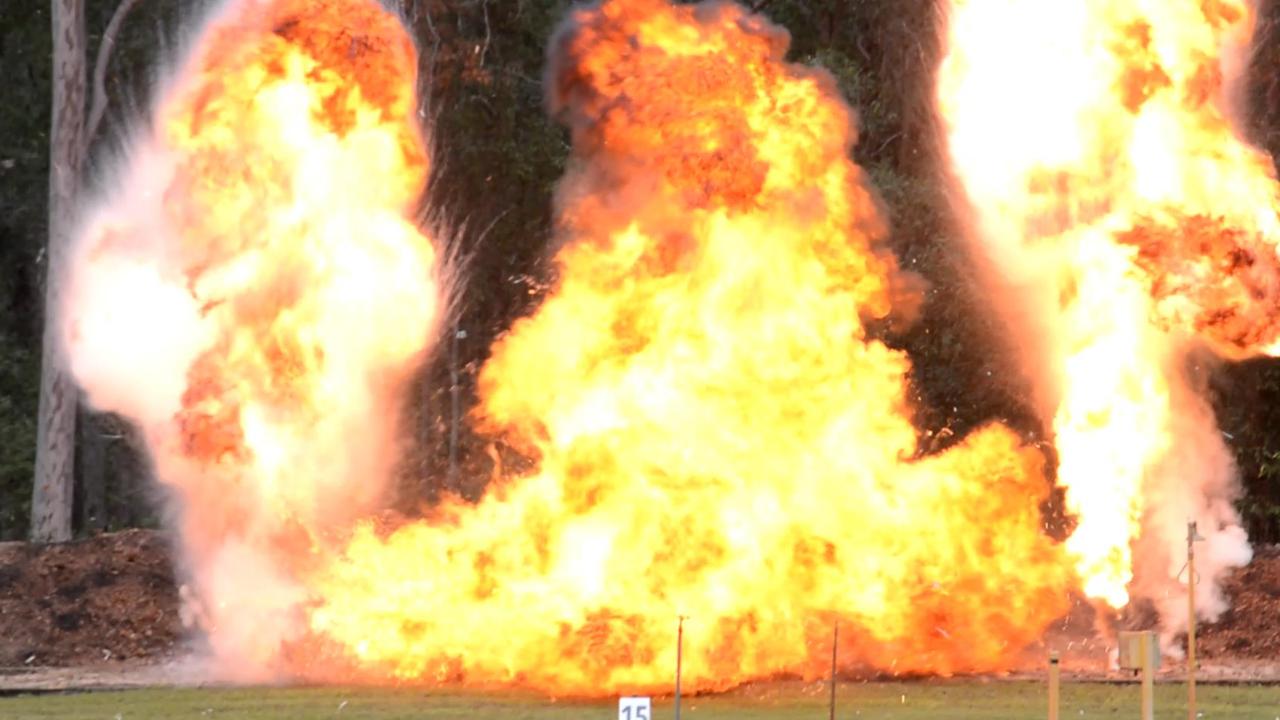Mining regulator hold 20th annual Power of Explosives Demonstration at Helidon
Laying forgotten in sheds and farm workshops across Queensland are an unknown amount of potential deadly explosives, and this workshop was designed to help emergency services prepare for when they are found by an unsuspecting member of the public.

Police & Courts
Don't miss out on the headlines from Police & Courts. Followed categories will be added to My News.
In farm workshops and backyard sheds scattered across Queensland are small caches of potential deadly explosives that have been forgotten about and left to decay.
The materials can be found by people ignorant of their destructive potential.
Worryingly, sometimes even police and emergency services personnel don’t quite know what they are dealing with.
To reduce the risk of death or serious harm, Queensland’s mining safety regulator has held annual explosive awareness days at its Helidon firing range.
Thursday marked the 20 years since the first Power of Explosives Demonstration was held, and it drew participants from across Australia, including mining staff, fire fighters, Queensland and Federal police and counter-terrorism experts.
They watched with interest as Resources Safety and Health Queensland explosives inspectors blew up everything from ammonium nitrate, to mining charges and detonator cord, black powder, fireworks and marine flares.
RSHQ deputy chief inspector Snezana Bajic said the day raised awareness of the explosive materials that could be found in the community.
“These agencies are handling these explosives and we want them to understand the safe way to handle them,” she said.
“It’s important for Queensland Police to understand the danger of these explosives because they are the first responders to any incident and they handle this.”
The group heard horror stories from inspectors, including an incident in North Queensland where a homeowner found some detonator cord and thinking it was harmless, used it to repair their clothes line.
They told of countless examples of black powder or gelignite left to decay in farm sheds, only to find when the owner dies and their family does a thorough clean out.
“We had instances of people being very surprised with what they found in their shed and we do everything that we can to destroy them safely,” Ms Bajic said.
The Australian mining and quarry sector used about 1.5 million tonnes of bulk explosive each year, all which was transported by road.
In September last year a truck carrying ammonium nitrate – a common fertiliser – crashed and exploded on the Bruce Highway near Gladstone, leaving a 5m deep crater.
About a decade ago, a truck carrying 52 tonnes of ammonium nitrate crashed near Charleville and the resulting explosion levelled a bridge.
Jeff Davis, Principal Science Officer for Emergency Services in Western Australia, was one of the participants at Thursday’s event and said it was important that first responders were aware of the risks they faced.
“It is surprising how significant some of the effects are with a relatively small amount of material,” he said.
“A lot of people think, to get a big bang you need a truckload of stuff, but that is not the case.
“Half a gram and a detonator can take fingers off and blow holes in the drum, as we saw a short while ago.”







